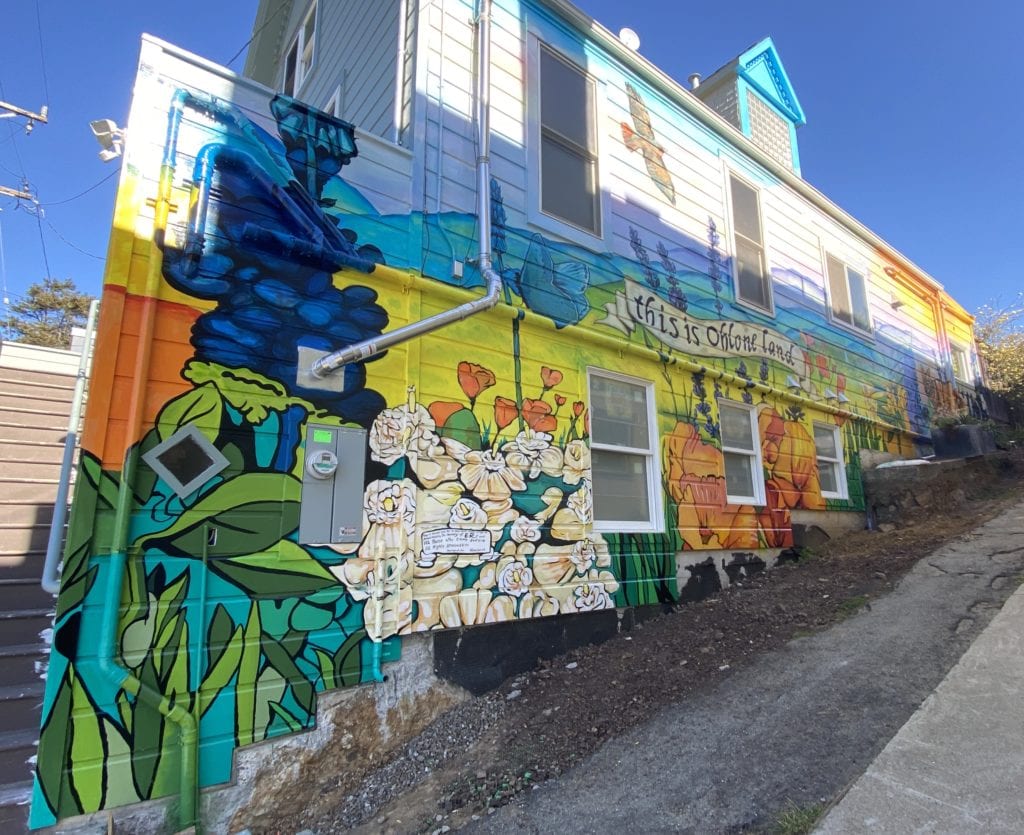
Among the many charming features of Glen Park are the unpaved lanes that welcome the wanderer from the city concrete–it’s instant nature, although with reminders of civilization: backyards, fences, garages, tire tracks. Walking through, one can see how the people living just beyond have lovingly tended (or neglected) these borderlands.
One does not expect to see a huge, riotously colorful mural on the side of a house, but recently it happened.
Harris Epstein, 36, lives at 208 Surrey Street, to the left of the entrance to Ohlone Way. That location presented an opportunity, since the entire length of the side of the house is exposed: a blank canvas, so to speak.
A native of Berkeley, Harris, his partner Abbie Coburn and their three children, have lived in the house for seven years. They’d always nurtured the idea of a mural and, one Christmas, Harris promised Abbie he was going to get the mural done as a present to her. Time passed and the mural didn’t *get done* as their family grew. Then, a major remodeling project presented an opportunity. “There was scaffolding in place already and we were already spending all this money on remodeling, so spending on a mural didn’t seem like it was going to be too much more. We were really pleased to add to the tradition of public art in San Francisco.”
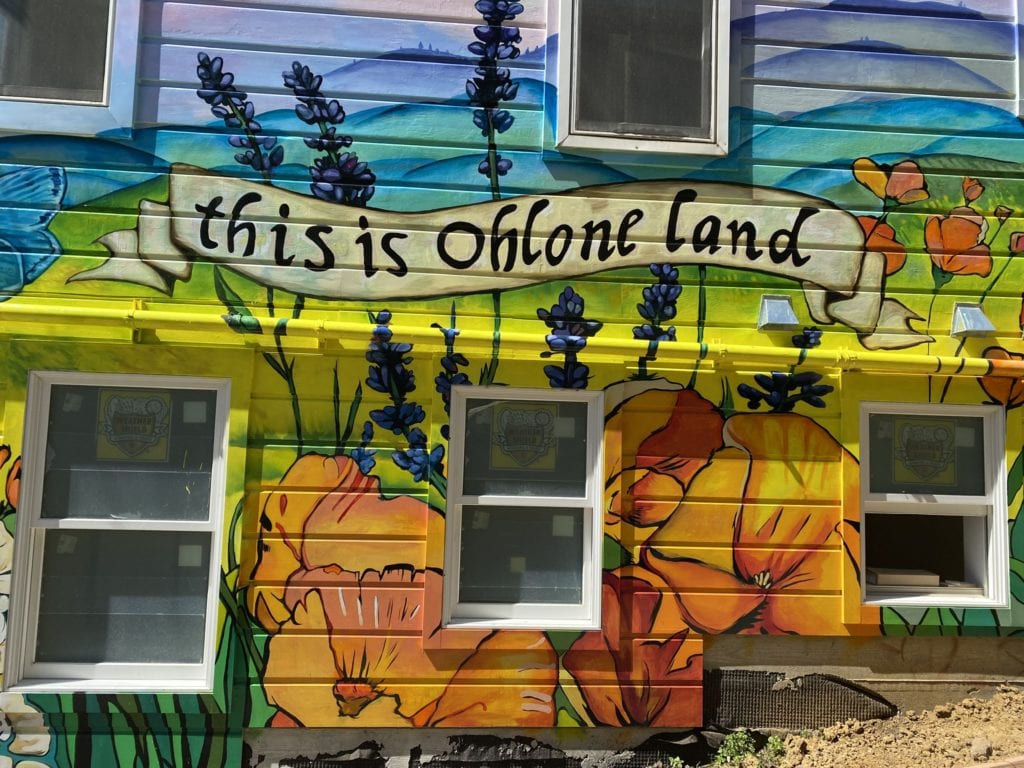
They started with the idea of an homage to San Francisco and the Ohlone people, who are native to the Northern California coast from the San Francisco Bay through Monterey Bay to the lower Salinas Valley.
Bands of the Ohlone people lived in 50 distinct landholding groups and traditionally subsisted on hunting, fishing and gathering. With Spanish colonization of California, and especially after California became a state in 1850, the number of Indigenous Californians were decimated through massacres sanctioned by the state government.
The Ohlone people residing in San Francisco and San Mateo counties belong to the Ramaytush, one of eight regional or linguistic subgroups of the Ohlone.
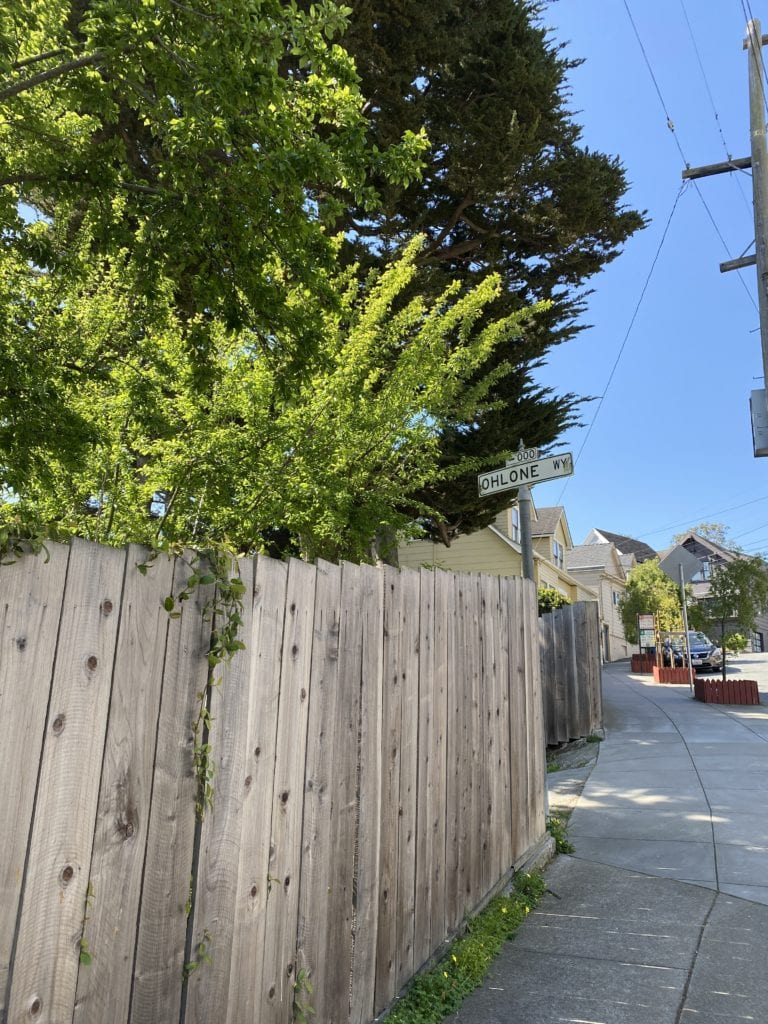
Unlike many unmarked lanes and alleyways in the city, Ohlone Way has a city street sign at both ends, on Surrey and on Sussex Streets. A former Van Buren Street resident, Dolan Eargle, had a good deal to do with the signage, lobbying the city to officially recognize the lane. Eargle was extremely gregarious, says Harris, and he wrote a book about Native peoples in California and did a lot of planting and maintaining along the way. Eargle also wrote for the Glen Park News years ago, in his column about local miscellany, “Strollin’ with Dolan.”
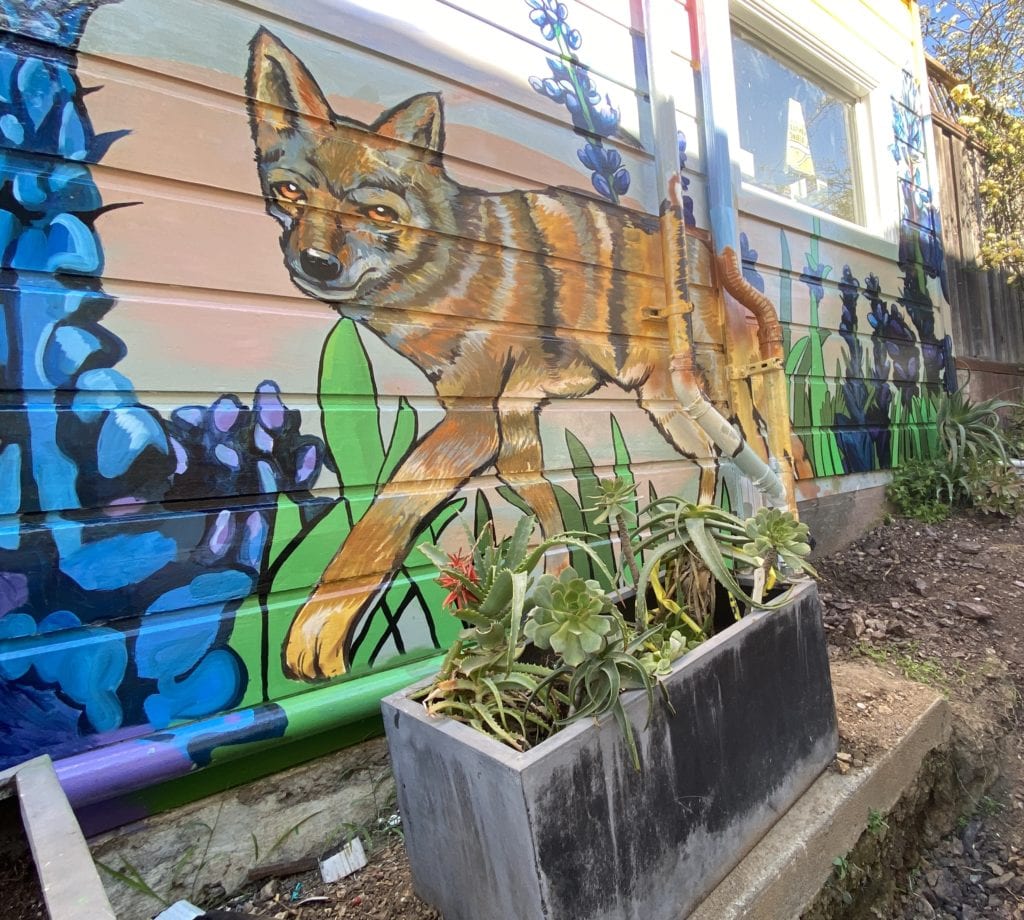
Harris and Abbie decided that, to honor the Ohlone people native to our area, the mural should show the local flora and fauna, rather than depicting buildings, people and artifacts. “We chose the most charismatic we could think of–Mission blue butterfly, red tail hawk, coyote, California poppies, yarrow, lupine.” It’s meant to imagine the landscape before the city was a city and to pay tribute to it.
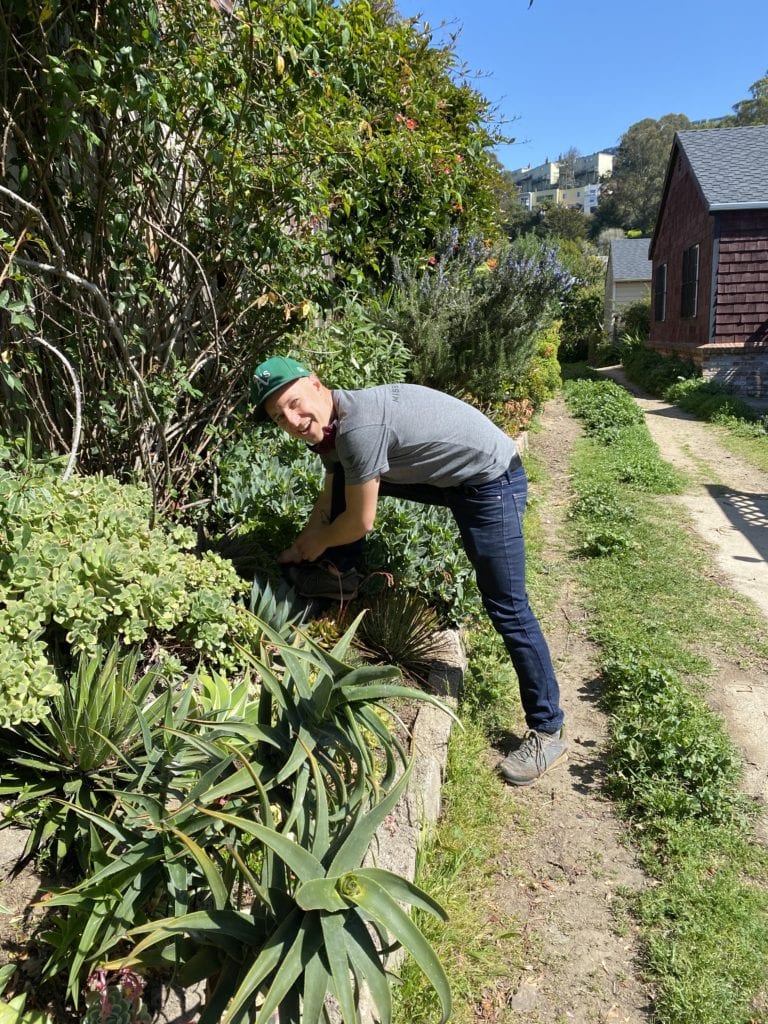
Along the fences beyond his house, Harris has created a garden with an array of succulents and other drought-tolerant plants.
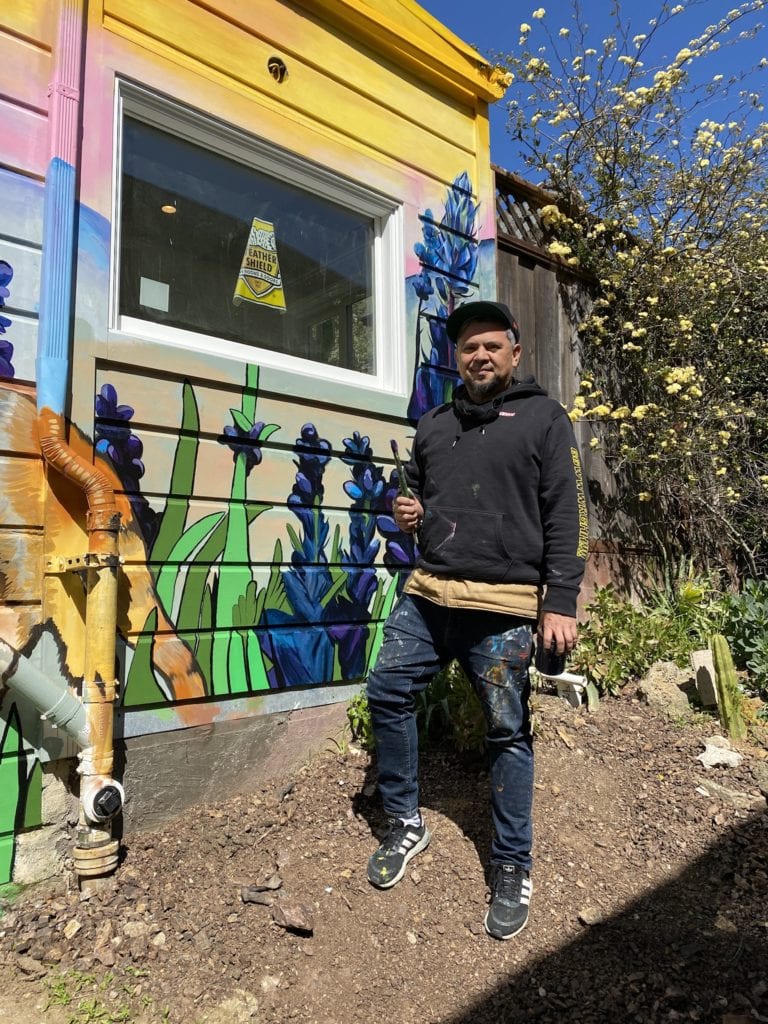
Josué Rojas, 41, the muralist, was recommended to Harris and Abbie by a friend, another muralist. He was raised in the Mission District. He says he was drawing before he could write and ultimately earned his bachelor’s and master’s degrees in painting. “As a teenager I was going through a lot of tumultuous moments. I lost my father and a cousin, and I had a lot of issues and pain. Around then I was discovered by Precita Eyes Center and they gave me a paint brush.”
Josué laments that there weren’t a lot of art classes in the public schools in San Francisco. It wasn’t a priority. In recent years this has begun to change and there’s more of a push for arts in the schools.
For two decades Josué ran cultural arts programs to benefit the Latino community in the Mission District, the most recent being Acción Latina. He has since gone full time into his own practice. “Covid brought a lot of things to light and reminded me that I’m my best with a brush in my hand. That’s what I really want to do,” he says. The mural, “This is Ohlone Land,” is his second commission.
Together Josué, Harris and Abbie worked through design iterations at the end of 2020. Josué put the various elements of the mural together digitally from a series of sketches and mockups. Once the painting got underway, it took about six weeks until, at the time of this writing, Josué was putting on the finishing touches, and now it is complete.
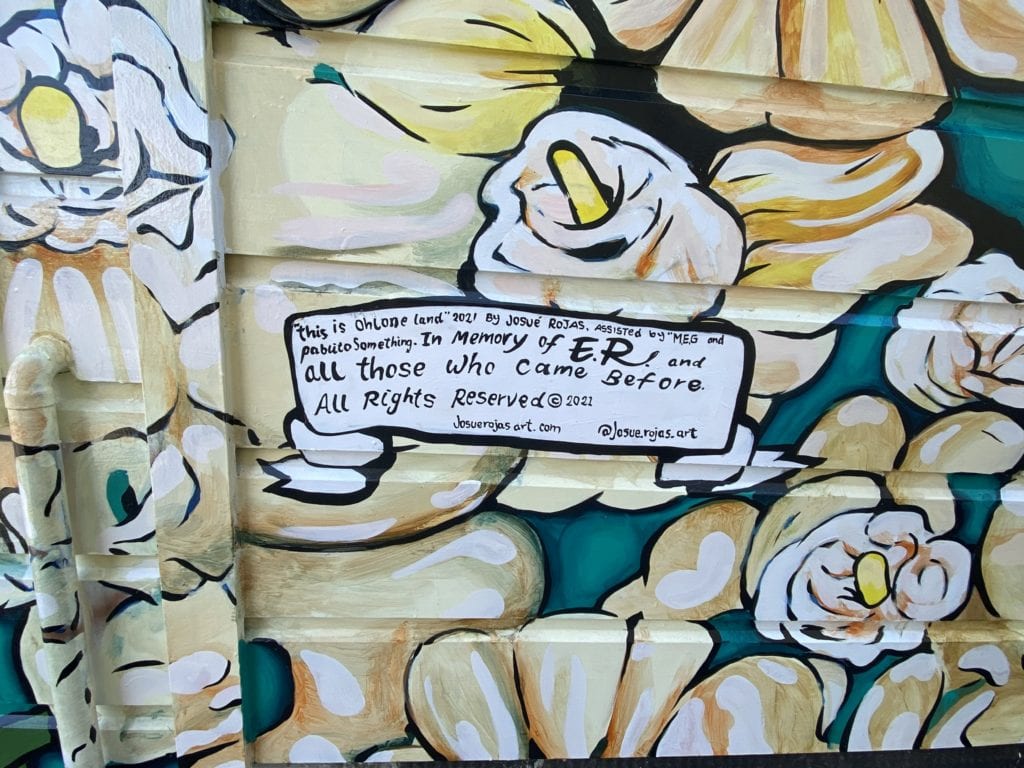
Others contributed to the mural, and are recognized in an inscription on it. Josué was assisted by “Pablito Something,” the name he goes by artistically, and one of Josué’s understudies, “MEG.” The mural is dedicated to Harris’ grandmother, “E.R.,” Ethel Ratner, who recently passed away at the age of 101.
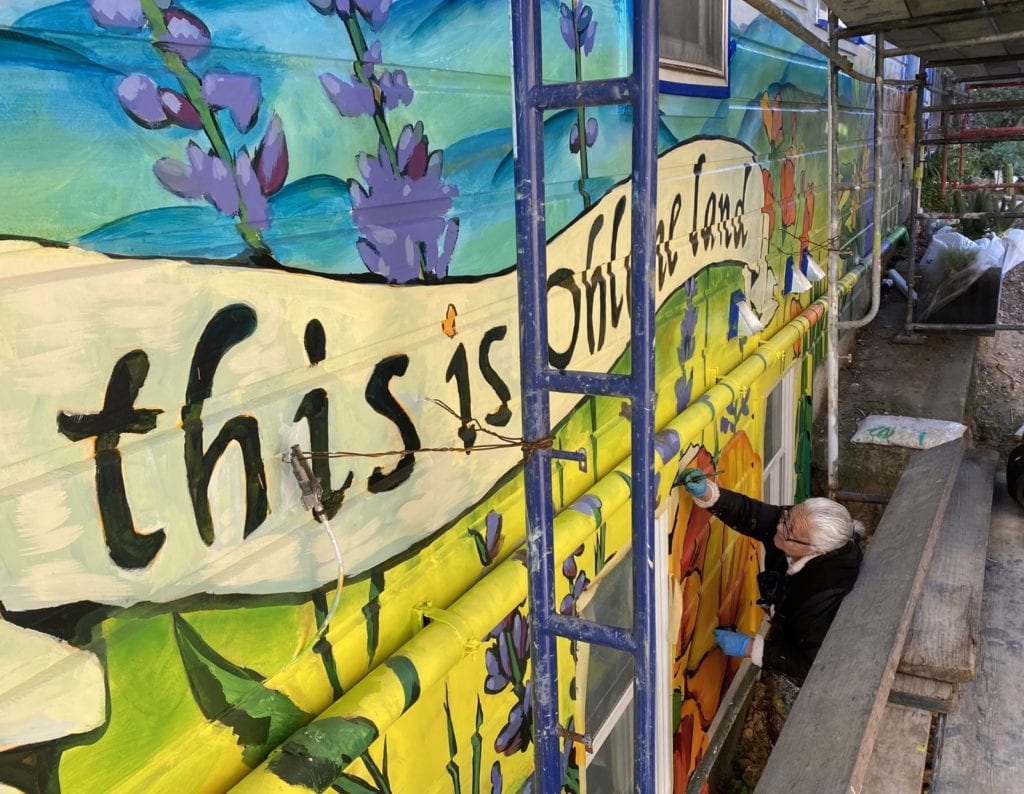
The mural is coated with a protective clear coat which has UV protection and, in the unfortunate possibility of tagging, graffiti can be wiped off with alcohol.
There are many ways to put up a mural, but Josué notes that the location of this one presented some unique obstacles. The massive size, the scaffolding needed, the house’s pipes and hardware to integrate into the mural, all presented challenges.
A particular limitation was the work environment itself. “It was hard to step back. Generally, I’m able to look at my work from across the street, or a half block away. Here I have maybe 25 feet of distance from which to view it,” as it’s taking shape.
When the mural was in process, and now that it’s complete, Harris enjoys chatting with the many passersby who stop to admire and learn about it. The idea for the mural was so that everyone could enjoy it.
Josué also sees the mural as a symbol and a reminder:
“It’s a call and challenge to remind folks to be grateful for this bountiful place, and that there were people here before. There was always something before, the originators, right? And it’s important to know that, when you see an Indigenous face, these people are still alive—a few—and to show that amount of respect and visibility, kindness and love for what was here before. And that’s the general spirit of this work.”
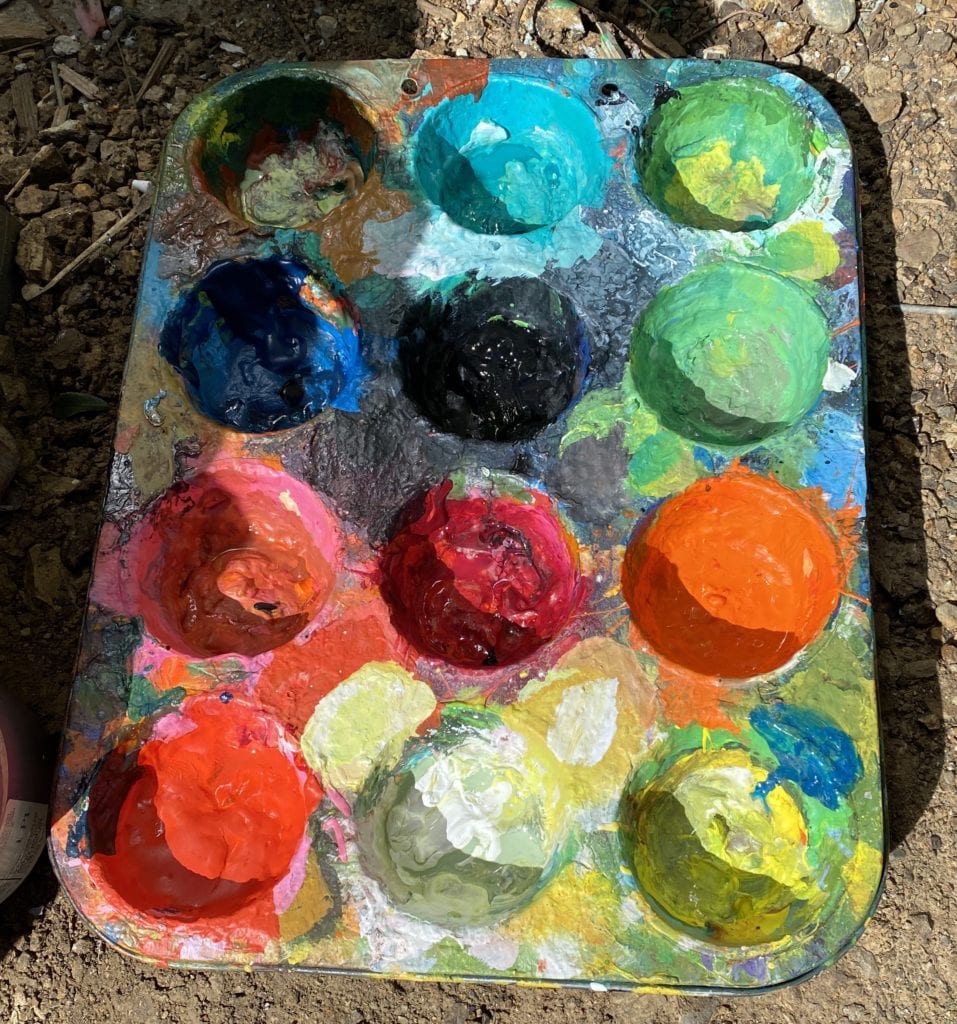
Instagram:
@josue.rojas.art
Website: